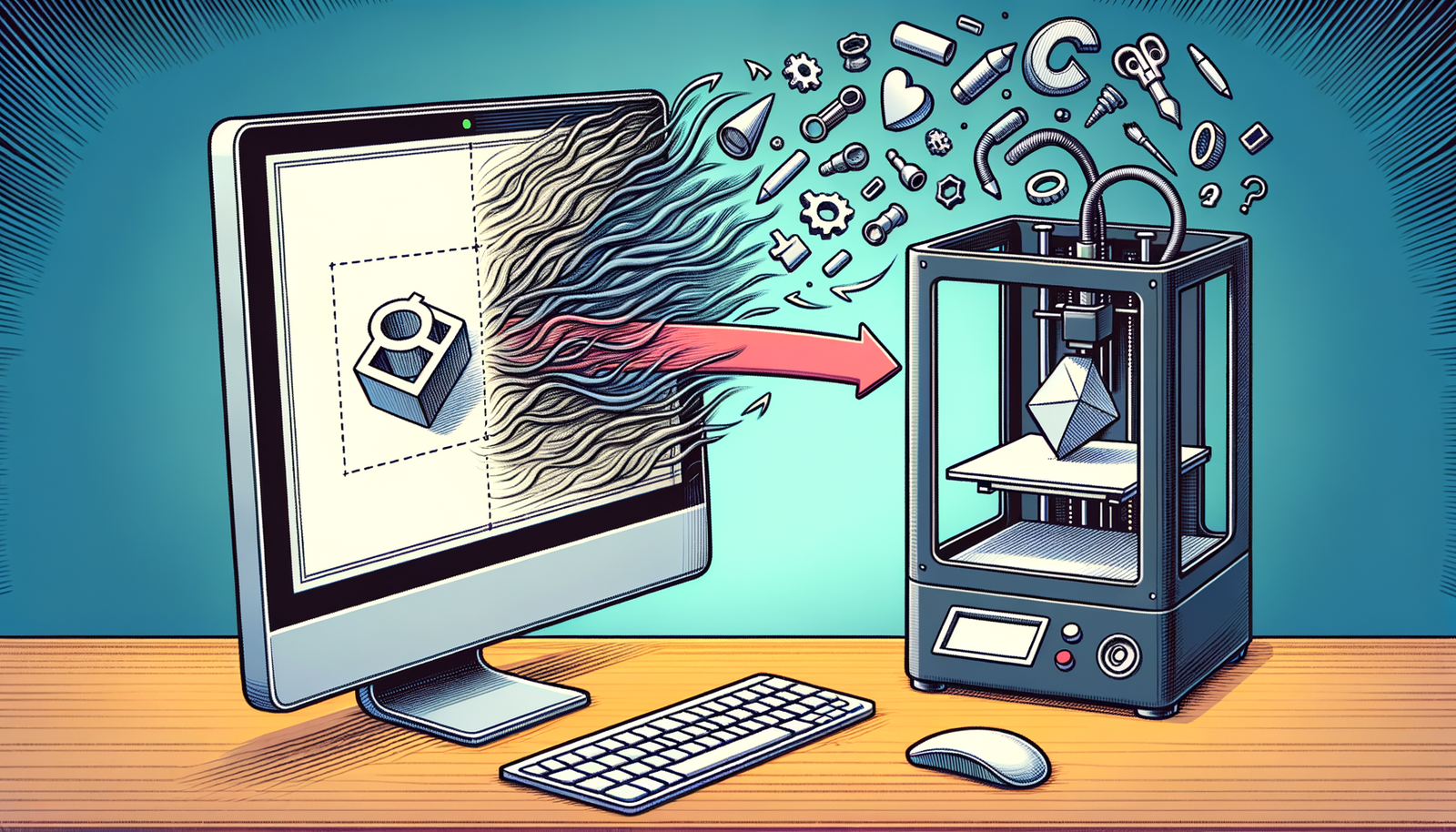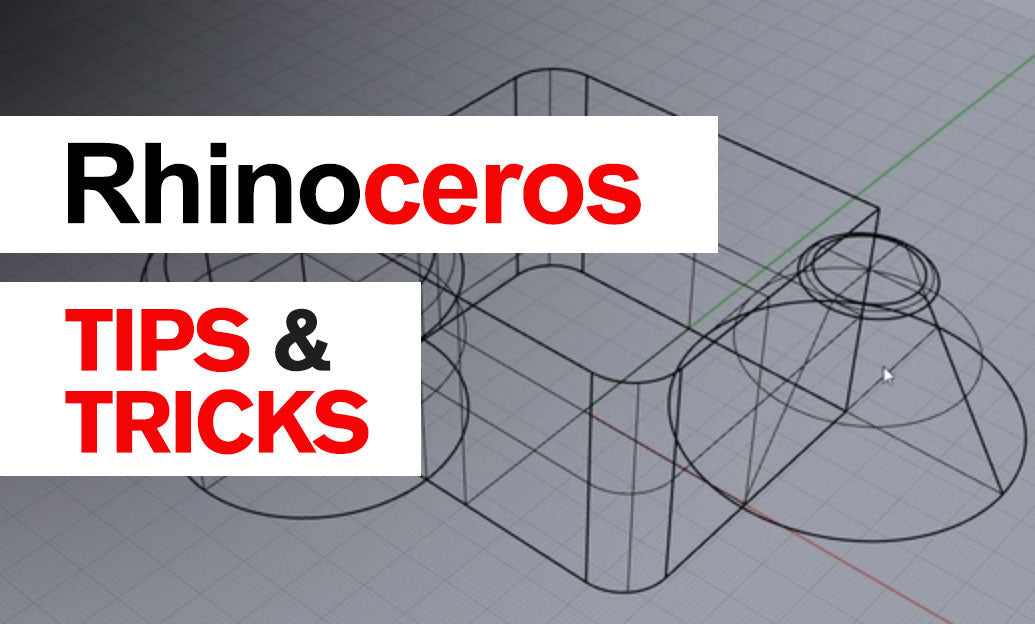Your Cart is Empty
Customer Testimonials
-
"Great customer service. The folks at Novedge were super helpful in navigating a somewhat complicated order including software upgrades and serial numbers in various stages of inactivity. They were friendly and helpful throughout the process.."
Ruben Ruckmark
"Quick & very helpful. We have been using Novedge for years and are very happy with their quick service when we need to make a purchase and excellent support resolving any issues."
Will Woodson
"Scott is the best. He reminds me about subscriptions dates, guides me in the correct direction for updates. He always responds promptly to me. He is literally the reason I continue to work with Novedge and will do so in the future."
Edward Mchugh
"Calvin Lok is “the man”. After my purchase of Sketchup 2021, he called me and provided step-by-step instructions to ease me through difficulties I was having with the setup of my new software."
Mike Borzage
Integrating CAD and Additive Manufacturing: Revolutionizing Design and Production Efficiency
February 18, 2025 10 min read


In the rapidly evolving landscape of manufacturing and design, the convergence of additive manufacturing (AM) and computer-aided design (CAD) systems is revolutionizing the way products are conceptualized, designed, and produced. This integration is not just a technological advancement but a strategic imperative for businesses aiming to stay competitive. By seamlessly combining the capabilities of AM and CAD, organizations can unlock unprecedented levels of efficiency, flexibility, and innovation.
Overview of Additive Manufacturing (AM)
Additive manufacturing, commonly known as 3D printing, refers to a set of technologies that build three-dimensional objects by adding material layer by layer, based on digital models. This process stands in contrast to traditional subtractive manufacturing, where material is removed from a solid block to create the desired shape. The key principles of AM involve the precise deposition of materials, guided by digital instructions, to construct complex geometries with high accuracy.
There are several common AM technologies widely used across industries:
- Fused Deposition Modeling (FDM): This technique involves extruding thermoplastic filaments through a heated nozzle, depositing material layer by layer. FDM is popular due to its cost-effectiveness and versatility in producing functional prototypes and end-use parts.
- Selective Laser Sintering (SLS): SLS uses a high-powered laser to fuse powdered materials, such as nylon or metals, into solid structures. It is ideal for creating durable, complex parts without the need for support structures.
- Stereolithography (SLA): SLA employs a laser to cure liquid resin into hardened plastic, layer by layer. This technology is known for producing parts with high precision and smooth surface finishes, suitable for detailed models and patterns.
The applications of additive manufacturing span various industries, including aerospace, automotive, healthcare, and consumer goods. In aerospace, AM enables the production of lightweight components with intricate designs that reduce fuel consumption. The healthcare sector utilizes AM for creating custom implants and prosthetics, improving patient outcomes. The ability to produce complex, customized parts efficiently makes AM a transformative force in modern manufacturing.
Introduction to Computer-Aided Design (CAD)
Computer-Aided Design (CAD) is a foundational tool in product design and development, allowing engineers and designers to create precise digital models of products, components, and assemblies. CAD software facilitates the visualization, simulation, and modification of designs in a virtual environment, reducing the need for physical prototypes and accelerating the development process.
The evolution of CAD software has significantly expanded its capabilities. Early CAD systems focused on basic 2D drafting, but modern CAD solutions offer advanced 3D modeling, parametric design, and integration with simulation tools. These advancements have enhanced the precision and flexibility in CAD models, enabling more complex and innovative designs. Designers can now easily alter dimensions, test different materials, and simulate real-world conditions to optimize performance before manufacturing.
CAD plays a crucial role in ensuring accuracy and efficiency in the production process. Precise digital models serve as the blueprint for manufacturing, minimizing errors and discrepancies between the design intent and the final product. The flexibility of CAD allows for rapid iterations, enabling teams to respond quickly to feedback and changing requirements, ultimately leading to better-designed products.
The Need for Integration
The integration of additive manufacturing and CAD systems is essential for creating a seamless design-to-production workflow. AM and CAD are inherently complementary; CAD provides the detailed digital models required for AM processes, while AM realizes these designs into physical forms. This integration enhances collaboration between design and manufacturing teams, reduces lead times, and improves overall efficiency.
By unifying design and manufacturing workflows, organizations can achieve several benefits:
- Streamlined Processes: Direct integration eliminates the need for intermediate steps, such as converting file formats or manually adjusting models for manufacturing, reducing the potential for errors.
- Enhanced Innovation: Designers can fully exploit the capabilities of AM technologies, creating complex geometries and customized products that were previously impractical or impossible.
- Agility and Competitiveness: Integrated systems enable faster response times to market changes and customer demands, providing a competitive edge.
Current trends, such as the demand for personalized products and the push for sustainable manufacturing, are driving the integration of AM with CAD systems. As technology advances, businesses recognize that integrating these systems is not just advantageous but necessary to thrive in a rapidly evolving market.
Enhanced Design Flexibility
The seamless integration of additive manufacturing with CAD systems significantly enhances design flexibility. Designers can leverage the unique capabilities of AM to create complex geometries not achievable with traditional manufacturing. This includes intricate internal structures, lattice designs, and organic shapes that optimize material usage and performance.
This flexibility facilitates iterative design and rapid prototyping. With integrated systems, modifications to the CAD model can be quickly and efficiently translated into physical prototypes using AM, allowing for rapid testing and validation. This accelerates the design cycle, enabling teams to explore more design alternatives and refine concepts without the delays associated with traditional manufacturing techniques.
The ability to produce customized and complex parts opens up new possibilities in various industries. For example, in the medical field, patient-specific implants can be designed and manufactured efficiently, improving patient outcomes. In automotive and aerospace, optimized components can lead to weight reduction and improved performance, contributing to sustainability efforts.
Improved Efficiency and Productivity
Integrating additive manufacturing with CAD systems leads to increased efficiency and productivity by creating a streamlined workflow that reduces the time and resources required to move from design to production. This integration minimizes manual interventions and errors by automating key processes and ensuring that all teams work from the most up-to-date design data.
Streamlined workflows are achieved by linking CAD designs directly with AM processes. Changes made in the CAD model are automatically reflected in the manufacturing instructions, reducing the need for manual updates and decreasing the likelihood of errors. This direct connection saves time and ensures consistency throughout the production process.
Minimization of errors through automated processes further enhances productivity. Integrated systems can automatically handle tasks such as generating support structures, optimizing build orientation, and checking for design issues that could affect manufacturability. This automation reduces the burden on engineers and allows them to focus on innovation and problem-solving rather than routine tasks.
By improving efficiency and productivity, organizations can reduce costs, accelerate time-to-market, and allocate resources more effectively, ultimately enhancing their competitiveness in the market.
Cost Reduction
Seamless integration of AM and CAD systems contributes to significant cost reductions in several ways. One of the primary benefits is the lower material waste compared to subtractive manufacturing methods. Since AM builds parts layer by layer using only the necessary material, waste is minimized, leading to cost savings on raw materials and contributing to environmental sustainability.
The integration also leads to decreased prototyping costs and faster time-to-market. Traditional prototyping can be expensive and time-consuming, often requiring specialized tooling or molds. With integrated AM and CAD systems, prototypes can be produced quickly and cost-effectively directly from digital models, enabling more frequent testing and iteration without substantial financial investments.
These cost savings extend to production runs as well. The ability to produce complex parts without additional tooling reduces setup costs and allows for economical production of small batches or customized products. The overall reduction in costs enhances profitability and provides the flexibility to explore new market opportunities.
Quality and Precision
Integrating additive manufacturing with CAD systems enhances the quality and precision of manufactured products. The use of precise CAD models ensures that every detail of the design is accurately captured during the manufacturing process. This precision is critical for applications where tolerances are tight and performance is crucial, such as in aerospace or medical devices.
Moreover, integrated systems facilitate consistent quality control. By maintaining a direct link between the design and manufacturing processes, discrepancies are minimized, and any changes are consistently implemented across all stages. Automated verification tools can check for potential issues in the design before production, reducing the risk of defects.
This level of precision and consistency leads to improved product reliability and performance, enhancing customer satisfaction and reducing costs associated with rework or warranty claims. By ensuring high quality from the outset, organizations can strengthen their reputation and gain a competitive advantage.
Compatibility Issues
One of the primary challenges in integrating additive manufacturing with CAD systems is addressing compatibility issues. Different software platforms may use varying file formats and data standards, leading to difficulties in transferring data seamlessly. For instance, a CAD model created in one system may require conversion before it can be used in a different AM software, potentially leading to data loss or errors.
Ensuring seamless data transfer without loss of information is critical. Incompatible file formats can result in inaccuracies, such as altered dimensions, missing features, or compromised surface quality. These issues can have significant consequences in manufacturing, leading to defective parts and increased costs due to rework or scrapping of materials.
To overcome these challenges, organizations need to adopt strategies such as using standardized file formats, implementing robust data management practices, and utilizing interoperability tools that facilitate communication between different systems. Addressing compatibility issues is essential for creating a reliable and efficient integration between CAD and AM.
Design Optimization
Another significant challenge is the need for design optimization when integrating CAD and AM systems. Additive manufacturing technologies have specific requirements and limitations, such as build volume constraints, layer resolution, and material properties. CAD designs must be adapted to suit specific AM technologies to ensure manufacturability and optimal performance.
Incorporating Design for Additive Manufacturing (DfAM) principles is essential. This involves understanding the nuances of AM processes and designing parts that leverage the strengths of AM, such as creating lightweight lattice structures or consolidating multiple components into a single part. Designers must also consider factors like support structures, orientation, and the impact of layer-by-layer construction on mechanical properties.
Adapting to DfAM requires specialized knowledge and may involve a steep learning curve for designers accustomed to traditional manufacturing methods. Organizations need to invest in training and tools that help designers optimize their models for AM, ensuring that the benefits of integration are fully realized.
Technical Limitations
Technical limitations present challenges in handling large and complex CAD files within AM systems. As designs become more intricate, file sizes increase, which can strain software capabilities and hardware resources. This can result in processing delays, software crashes, or reduced performance, hindering productivity.
Managing support structures and post-processing requirements adds another layer of complexity. Many AM processes require temporary supports to be built alongside the part, which must be carefully designed to ensure ease of removal and minimal impact on the final product. Post-processing steps such as cleaning, finishing, and heat treatment can also complicate the integration process.
Addressing these technical limitations may require investments in more powerful hardware, specialized software solutions, and the development of new workflows. Collaboration between software developers, hardware manufacturers, and end-users is essential to overcome these challenges and improve the integration of CAD and AM systems.
Skill Gaps and Training
The successful integration of additive manufacturing with CAD systems hinges on the capabilities of the workforce. There is often a necessity for designers and engineers to master both CAD and AM tools, which can be a significant undertaking. The integration demands not only proficiency in advanced CAD modeling but also a deep understanding of AM processes, materials, and limitations.
Ongoing education is crucial to keep pace with evolving technologies. The rapid advancements in both CAD software features and AM methods mean that skills can quickly become outdated. Organizations must provide continuous training opportunities, workshops, and access to learning resources to ensure their teams remain competent and confident in utilizing integrated systems.
Bridging the skill gap also involves fostering a collaborative culture where knowledge sharing is encouraged. Cross-functional teams comprising designers, engineers, and manufacturing specialists can facilitate the exchange of insights and best practices, enhancing the overall effectiveness of the integration.
Adopting Standardized File Formats
To overcome compatibility challenges, one effective strategy is adopting standardized file formats like STEP and STL. These formats are widely supported across different CAD and AM software, facilitating smoother data exchange. Utilizing universal formats minimizes the risks associated with data loss or corruption during file transfers.
Implementing data validation processes ensures the integrity of files before they are used in manufacturing. By checking for errors such as missing surfaces, non-manifold edges, or invalid geometries, organizations can prevent issues that might lead to defective prints or production delays. Automated validation tools can streamline this process, providing quick feedback to designers.
Standardization also supports better collaboration with external partners, suppliers, and clients by reducing barriers related to software compatibility. By establishing common standards, organizations can enhance efficiency, reduce miscommunications, and foster stronger relationships throughout the supply chain.
Leveraging Interoperability Tools
Leveraging interoperability tools such as plugins and middleware can bridge gaps between different CAD and AM systems. These tools facilitate the seamless transfer of data, allowing different software applications to communicate effectively. They can automate tasks like file conversion, synchronization of model changes, and integration of additional functionalities.
Integrating cloud-based platforms offers additional benefits for collaborative workflows. Cloud solutions enable decentralized teams to work on shared models in real-time, enhancing communication and reducing delays. They provide scalability, allowing organizations to access increased computing resources as needed, which is particularly useful for processing large and complex models.
By adopting interoperability tools and cloud technologies, organizations can enhance their agility and responsiveness. This approach supports a more flexible and dynamic workflow, accommodating the rapid pace of technological change and evolving business needs.
Implementing Design for Additive Manufacturing (DfAM)
To fully realize the benefits of integrating AM with CAD systems, it is essential to implement Design for Additive Manufacturing (DfAM) principles. Training teams on DfAM equips them with the knowledge to optimize designs specifically for AM processes, considering factors like build orientation, support requirements, and material properties.
Utilizing simulation and analysis tools enables designers to predict manufacturing outcomes. These tools can model the AM process, identifying potential issues such as thermal distortions, residual stresses, or inadequate supports. By addressing these concerns during the design phase, teams can improve the quality and reliability of the final product.
Implementing DfAM fosters innovation by encouraging designers to explore new possibilities afforded by AM technologies. It can lead to the development of products with improved performance, reduced weight, or enhanced functionality, providing a competitive advantage in the marketplace.
Continuous Improvement and Feedback Loops
Establishing processes for continuous improvement and feedback loops between design and manufacturing teams is vital for effective integration. Regular communication ensures that insights gained during production inform future designs, leading to ongoing enhancements in product quality and process efficiency.
Monitoring and analyzing performance metrics, such as production times, material usage, and defect rates, provides valuable data for refining integration strategies. This data-driven approach enables organizations to identify bottlenecks, optimize workflows, and make informed decisions about technology investments.
Creating a culture of continuous improvement encourages experimentation and learning. By embracing failures as opportunities for growth and fostering open dialogue, teams can adapt rapidly to changes and drive innovation. This mindset positions organizations to capitalize on the full potential of integrating additive manufacturing with CAD systems.
Seamlessly integrating additive manufacturing with CAD systems is pivotal for advancing modern design and production capabilities. By overcoming compatibility challenges and adopting best practices, businesses can unlock enhanced flexibility, efficiency, and quality in their manufacturing processes. As technology continues to evolve, the synergy between CAD and AM will undoubtedly play a crucial role in driving innovation and maintaining competitive advantage in various industries. Embracing this integration not only streamlines workflows but also paves the way for groundbreaking designs and sustainable manufacturing solutions.
Also in Design News

Rhino 3D Tip: Rhino Plug-in Maintenance and Safe Update Workflow
December 16, 2025 2 min read
Read More
Cinema 4D Tip: Tiered Cinema 4D Render Presets with Tokenized Outputs
December 16, 2025 2 min read
Read More
Revit Tip: Duct Routing Best Practices and Fabrication Workflow
December 16, 2025 2 min read
Read MoreSubscribe
Sign up to get the latest on sales, new releases and more …


